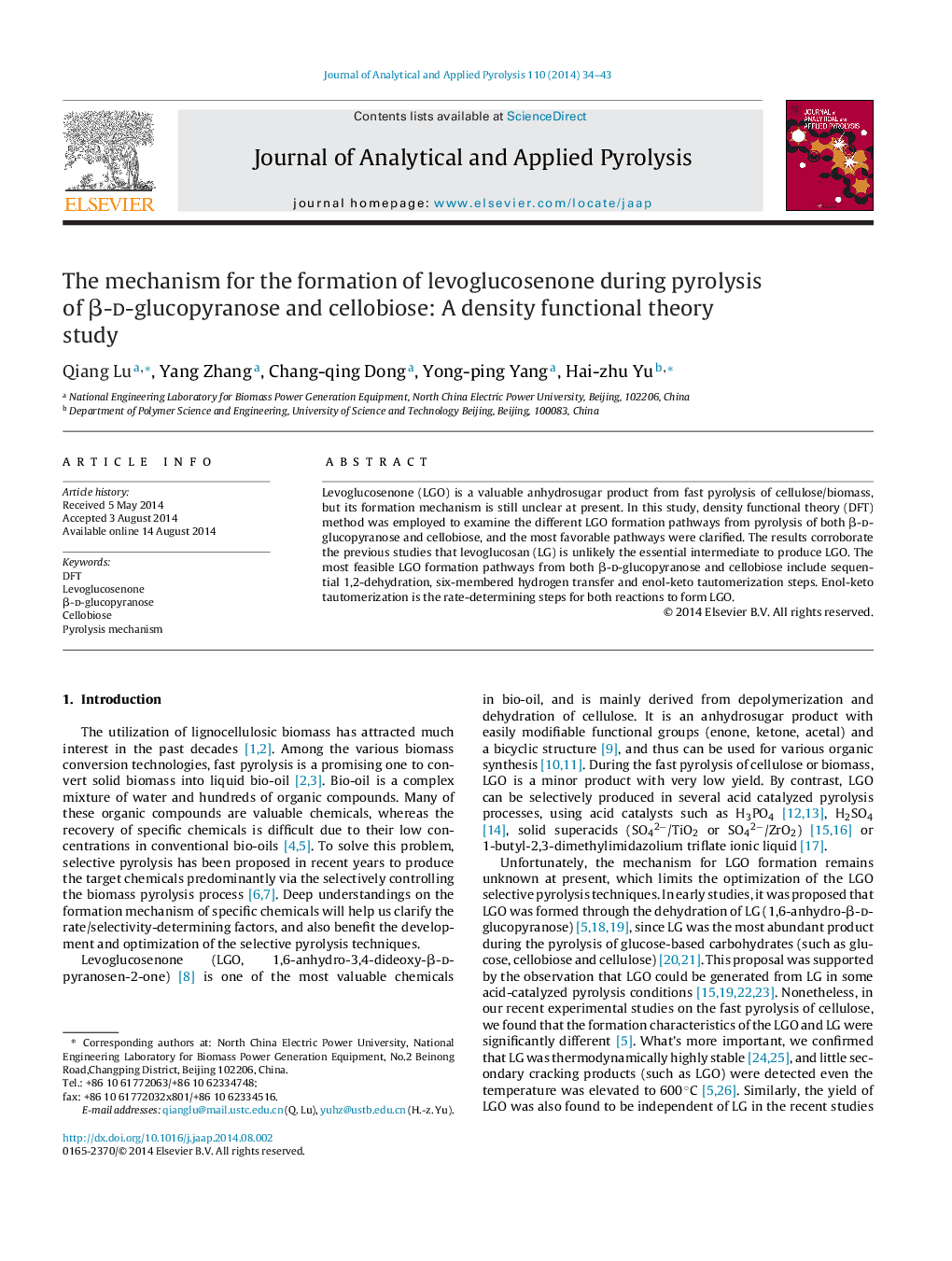| Article ID | Journal | Published Year | Pages | File Type |
|---|---|---|---|---|
| 1197288 | Journal of Analytical and Applied Pyrolysis | 2014 | 10 Pages |
•DFT method was employed to study the formation mechanism of LGO from β-d-glucopyranose and cellobiose pyrolysis.•LG is not the essential intermediate to form LGO.•β-d-Glucopyranose and cellobiose have similar reaction mechanism in forming LGO.•The glycosidic bond in cellobiose is important for LGO formation.
Levoglucosenone (LGO) is a valuable anhydrosugar product from fast pyrolysis of cellulose/biomass, but its formation mechanism is still unclear at present. In this study, density functional theory (DFT) method was employed to examine the different LGO formation pathways from pyrolysis of both β-d-glucopyranose and cellobiose, and the most favorable pathways were clarified. The results corroborate the previous studies that levoglucosan (LG) is unlikely the essential intermediate to produce LGO. The most feasible LGO formation pathways from both β-d-glucopyranose and cellobiose include sequential 1,2-dehydration, six-membered hydrogen transfer and enol-keto tautomerization steps. Enol-keto tautomerization is the rate-determining steps for both reactions to form LGO.
